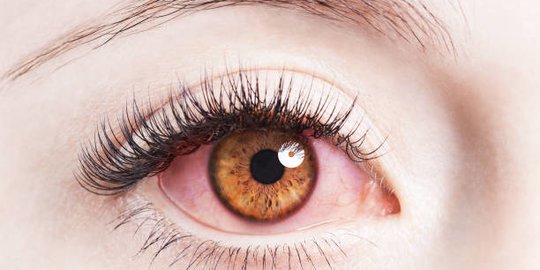Merdeka.com – Dry eye syndrome lurks those who work staring at screens for too long. As is known, some people work from home while working from home (WFH) during the pandemic since March 2020.
“Dry eyes are caused by various factors, one of which is staring at TV, computers or gadgets for too long,” said Eye Specialist, Dr. Damara Andalia SpM, in a health webinar. This was quoted from Antara, Wednesday (6/10).
This prolonged pandemic situation requires some people to sit or lie down while watching television, reading and staring at screens for long periods of time which puts people at risk for dry eyes. Such a lifestyle can trigger or exacerbate dry eye conditions. Exposure to air conditioning directly for too long also has an effect.
Dr. Damara said, dry eyes are caused by a decrease in the production and quality of tears which act as lubricants. If left untreated, dry eyes can lead to complications of open wounds on the outer protective layer of the eye, namely the cornea.
Dry eyes can be experienced by people over 50 years old, especially post-menopausal women. However, with a digital lifestyle where gadgets cannot be separated from daily life, young adults and even children can experience dry eyes, said an ophthalmologist from the University of Indonesia.
Dry eyes can also be triggered by environmental factors, such as dust, dryness, wind and cigarette smoke.
This can also occur in people who have a history of eye surgery, or have other diseases that trigger dry eyes. Other factors that can cause dry eyes include wearing contact lenses that are not in accordance with the ophthalmologist’s instructions, and metabolic diseases such as diabetes mellitus.
Dry eye has a fairly high prevalence in Indonesia, namely 27.5 – 30.6 percent, and is higher in the elderly population, which is 5 to 30 percent.
The member of the Indonesian Ophthalmologist Association (PERDAMI) explained that the prevalence of dry eye in patients with metabolic disorders is higher than the general population, reaching more than 20 percent.
“Patients with metabolic disorders and dry eyes must be treated systemically, thoroughly, not only in the eyes,” explained Damara.
Symptoms and solutions
Usually, the symptoms felt include a feeling of lump in the eyes, watery eyes, dry eyes, and a gritty sensation. Eyes can also feel sticky, the eyes are often red, eye discharge appears and rubs the eyes frequently.
Symptoms of dry eye can be seen from abnormalities in tears, ranging from tear evaporation, tear volume, tear viscosity and tear oil gland analysis. Another sign is damage to the surface of the eye, where there is staining on the surface of the eye.
Damara reminded the public not to underestimate dry eyes. Because this disease is dangerous if not treated
Dry eyes that are not treated properly will reduce the quality of life, because a person becomes difficult to carry out normal activities due to eye discomfort and dependence on drugs.
In severe cases, untreated dry eye can cause damage to the surface of the eye due to infection. Because, dry eyes are more easily infected with foreign things, such as pollution or bacteria. Damage that occurs can be mild to severe, temporary or permanent.
“Although dry eye is a disease that is often encountered, but it is complex in nature, it is important to find out in detail the causes and risk factors of dry eye so that it can be handled properly so that it does not interfere with the quality of life,” he explained.
Damara said the treatment takes a long time, but therapy can be started by modifying the lifestyle.
Therefore, he invites the public to avoid a lifestyle that can trigger or aggravate dry eyes, namely adopting a healthy lifestyle and limiting staring at screens, not using air conditioning excessively.
Don’t forget to apply the 20-20-20 method to prevent eye fatigue. Namely resting the eyes for 20 seconds by staring into the distance that is 20 feet or six meters each time staring at the screen for 20 minutes.
Eyes can also be treated at home by giving warm compresses to the eyelids, keeping the eyelids clean, consuming enough water and changing habits, such as adjusting the duration of staring at screens. If needed, use the right eye drops according to the needs and condition of the eye. [lia]
– .


